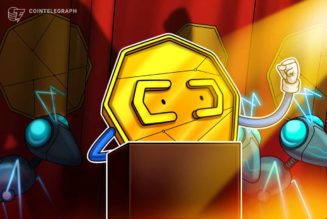Arts
Dune Part 2: A larger-than-life cinematic experience and storytelling
Tuesday March 05 2024

Dune: Part Two is a 2024 American epic science fiction film, co-written by Jon Spaihts. PHOTO | POOL
Some people, including myself, found Dune Part 1 (2021) to be a visual masterpiece but fell short in story and character development. It was a grand setup designed to only introduce us to the characters, and the world and establish the primary conflict of the story that leaves us hanging.
The anticipation for the second part was high, initially set for release in 2023 but delayed due to the actors’ strike during the latter part of the year. It’s 2024, and finally, Dune Part 2 is here, and it may be the best sequel since The Dark Knight (2008).
Dune Part 2
Directed and co-produced by Denis Villeneuve, Dune: Part Two is a 2024 American epic science fiction film, co-written by Jon Spaihts. It continues the story from Dune (2021), adapting the second part of Frank Herbert’s 1965 novel.
The sequel follows Paul Atreides as he joins forces with the Fremen people to wage war on House Harkonnen on the sandy desert planet Arrakis. The stellar cast, including Timothée Chalamet, Rebecca Ferguson, Josh Brolin, Stellan Skarsgård, Dave Bautista, Zendaya, Charlotte Rampling, and Javier Bardem, reprise their roles, joined by new additions such as Austin Butler, Florence Pugh, Christopher Walken, Léa Seydoux, and Souheila Yacoub.
The story delves deeper into the characters and their evolving dynamics against the backdrop of intergalactic politics and power struggles.
Synopsis
In Dune Part 2, Paul Atreides, alongside Chani and the Fremen, seeks vengeance against those who destroyed his family. The film explores Paul’s journey, from his rise to power among the Fremen to his rebellion against House Harkonnen and Padishah Emperor Shaddam IV, portrayed by Christopher Walken.
The good
This, like the first movie, is a Dennis Villeneuve film, and if you’re familiar with the director, you know the visuals are going to be awesome. The cinematographer, Greig Fraser (known for Rogue One, The Batman and Dune Part 1) work stands out significantly and is one of the main reasons I recommend watching this on the big screen, preferably IMAX.
The sandy world of Arrakis is captured well with sweeping wide shots of desert dunes, and crucial moments are meticulously framed to capture core character moments in the film, immersing you in the story and the world. The scale is effectively conveyed, making structures, crafts, and creatures like the worm feel immense, mostly achieved by framing people next to or around these gigantic structures for us to be able to relate. Overall, the visuals in this film are a character in themselves.
What sets Denis Villeneuve apart in this film is his ability to blend and balance the complex and dense themes of the source material with great visuals, resulting in an accessible product with a comprehensive structure that even those unfamiliar with the book and sci-fi can understand.
This sequel offers insight into the culture of the Fremen, giving us an idea of who they are, and their belief systems. The story is surprisingly political yet accessible. In many big-budget sci-fi films, politics are often sidelined in favour of visual spectacle, but in this film, relatable religious and political themes, centred on control, are prominent, particularly through the character of Jessica played by Rebecca Ferguson. There are also philosophical elements, such as religious fundamentalism and concepts that centre on prophecies and messianic ideology.
All the performances are excellent, The majority of the actors are crème de la crème Hollywood actors, but Austin Butler and Zendaya in particular stand out due to the complexity of their characters’ journeys.
However, it’s the fleshed-out character arcs, well-thought-out screenplay, and distinctive costume and makeup designs that truly make the characters believable.
The visuals and special effects are seamlessly integrated, occasionally prompting a double take and confirming that what you are watching is purely sci-fi fantasy. The House Harkonnen has a distinctive look, the ‘look’ despite there being an explanation as to why they look the way they look, helps in distinguishing them from the Fremen.
Hans Zimmer’s sound design adds another layer of intensity and depth to the visuals, whether it’s a calm desert scene or an intense action set piece.
Speaking of the action set pieces, they are okay, but I found myself more fascinated by the politics, characters, and wide-open landscapes, apart from the final fight involving Paul Atreides and Feyd-Rautha.
The bad
The villains lacked depth, with the biggest disappointment being Beast Rabban (Dave Bautista). Unlike in the first film, he felt less menacing and more like a stereotypical bad guy who simply shouts at his subordinates when things go wrong. His uncle, Baron Harkonnen, is more of a background character, and it feels like there was little effort to develop his character further.
The introduction of new characters as the movie progresses towards the third act gives the impression that while this film is a stand-alone movie, it’s also setting up the possibilities of a third movie.
Lastly, the portrayal of the emperor by Christopher Walken falls short. He lacks the imposing presence expected of an emperor.
In the brief screen time he has, he comes across as accessible, too accessible in fact. When you think of an emperor you think of grandeur, excess and presence. An emperor should stand out, walk into a room and everyone stops breathing.
He should be framed like he is the centre of the universe, evoking a sense of awe where everyone stops in their tracks in his presence. In this film, the emperor looks and feels like your regular Joe.
In conclusion
Renowned for his meticulous attention to detail and his skill in crafting expansive worlds, Villeneuve once again demonstrates his mastery with Dune: Part Two.
Whether you’re a sci-fi enthusiast, a fan of the director, or simply a lover of cinema, this is a film worth experiencing on the largest screen possible, accompanied by exceptional sound quality, preferably in IMAX.
Now let’s say you are unfamiliar with Denis Villeneuve’s work, Dune: Part Two remains accessible. However, you may find yourself grappling with its pacing and editing style.
Additionally, there are some peculiar story moments, particularly involving Jessica (portrayed by Rebecca Ferguson), that might leave you questioning what exactly is happening.
Nevertheless, this film strikes a remarkable balance between visual prowess and compelling storytelling. It’s intriguing how political and religious themes are given as much emphasis as the stunning visual presentation, unlike most typical sci-fi movies.
Clocking in at almost three hours, the film offers a cinematic experience that is undeniably worth every penny spent at the cinemas.
X: @stanslausmanthi









